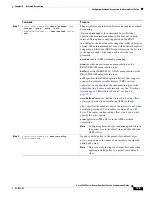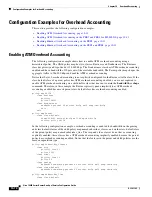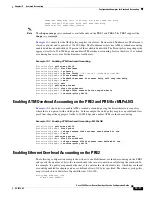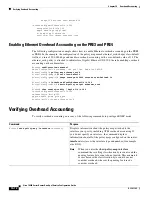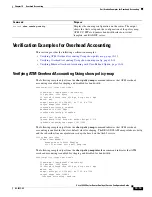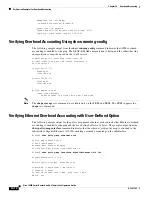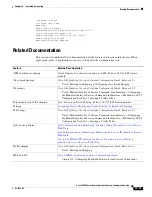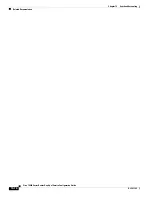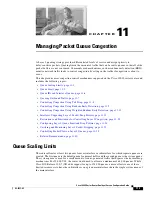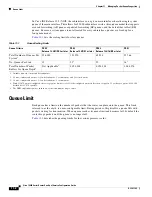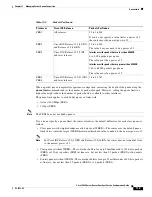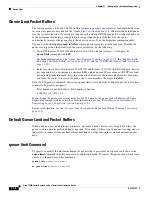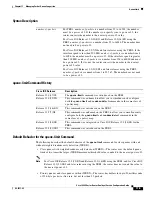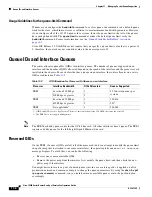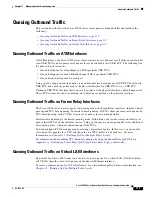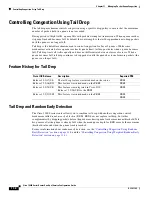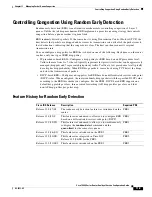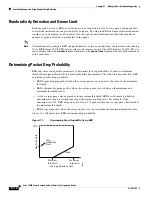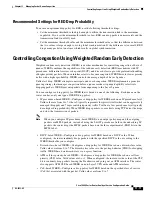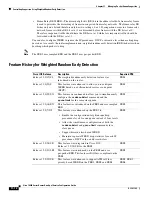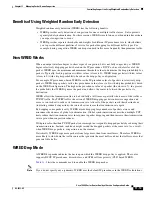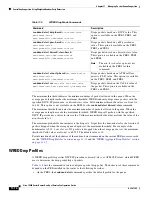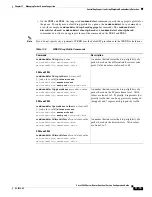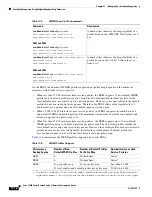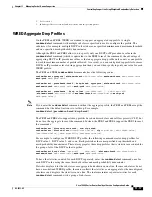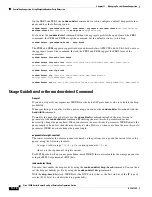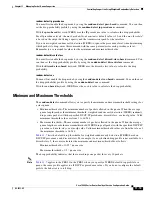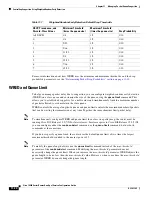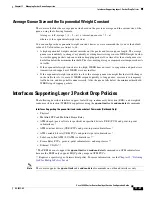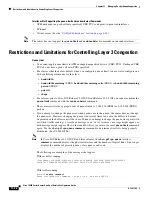
11-7
Cisco 10000 Series Router Quality of Service Configuration Guide
OL-7433-09
Chapter 11 Managing Packet Queue Congestion
Queuing Outbound Traffic
Queuing Outbound Traffic
This section describes how the Cisco 10000 series router queues outbound traffic and includes the
following:
•
Queuing Outbound Traffic on ATM Interfaces, page 11-7
•
Queuing Outbound Traffic on Frame Relay Interfaces, page 11-7
•
Queuing Outbound Traffic on Virtual LAN Interfaces, page 11-7
Queuing Outbound Traffic on ATM Interfaces
On ATM interfaces, the Cisco 10000 series router creates one set of queues for all of the unspecified bit
rate (UBR) PVCs and a separate set of queues for each variable bit rate (VBR) PVC. The following lists
the queues the router creates:
•
One default queue for all unshaped (no PCR specified) UBR PVCs
•
One default queue for each VBR and shaped (PCR is specified) UBR PVCs
•
One network control queue for each port
Using a policy map, you can optionally create additional class-based queues for UBR PVCs and each
VBR PVC, and attach the policy map to the physical interface for UBR PVCs or to a VBR PVC.
Unshaped UBR PVCs that have their own service policy use the physical interface’s default queue only.
These PVCs cannot use any user-defined, class-based queue defined on the physical interface.
Queuing Outbound Traffic on Frame Relay Interfaces
The Cisco 10000 series router supports two queuing modes for Frame Relay interfaces: interface-based
queuing and PVC-based queuing. In interface-based queuing, all PVCs share the same set of queues. In
PVC-based queuing, each PVC has its own set of queues for its outbound traffic.
Interface-based queuing is the default queuing mode. In this mode, the system creates a default set of
queues that all PVCs on the interface can use. Using a policy map, you can optionally create additional
class-based queues, which are shared among all the PVCs.
You can configure PVC-based queuing by creating a hierarchical policy. In this way, you can enable
class-based fair queuing for a PVC and shape the total PVC traffic to a desired rate. For more
information, see
Chapter 13, “Defining QoS for Multiple Policy Levels.”
For information about enabling PVC-based fair queuing by using the Frame Relay QoS CLI, see
Appendix A, “Configuring Frame Relay QoS Using Frame Relay Legacy Commands.”
Queuing Outbound Traffic on Virtual LAN Interfaces
By default, the Cisco 10000 series router does not create a queue for a virtual LAN (VLAN) interface.
All VLANs share the same set of queues on the physical Ethernet interface.
To create a separate queue for a VLAN interface, use a hierarchical policy. For more information, see
Chapter 13, “Defining QoS for Multiple Policy Levels.”

